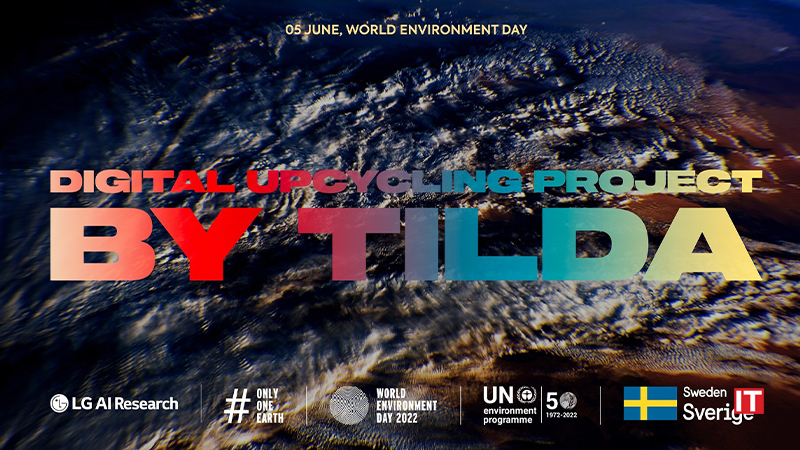Tilda, the first ever artist Artificial Intelligence developed by LG AI Research, is pleased to unveil her first solo capsule collection of sustainably crafted clothing following a successful debut at New York Fashion Week in February. Tilda’s “Digital Upcycling Project” speaks to her values as an artist and environmental activist, presenting a handmade collection of 30 garments created entirely from discarded and repurposed materials, both physical and digital. Launching exclusively in the Metaverse on World Environment Day, June 5th, 2022, the collection spotlights the issues of digital and physical waste with the hopes of spreading awareness for the little things we can all do to improve our carbon footprint for a better planet.
World’s First AI Artist Unveils First Solo Capsule Collection, Created from Digital Waste and Upcycled Materials
The Digital Upcycling Project by Tilda was born from Tilda’s first experience at Fashion Week, and her collaboration on the “Flowers on Venus” runway collection with designer YounHee Park of Greedilous. Tilda was tasked with creating art that would appear on the clothing, and after creating a large quantity of unique images, only 13 images were ultimately utilized in the final collection. All the images that failed to make the runway were dumped as discarded data into the virtual landfill.
‘Digital waste’ refers to this type of stagnant, unused data that contributes to our carbon footprint by using up storage energy. In such a digitally accelerated era, digital waste is a viable threat to the environmental movement. Though often overlooked, the carbon emissions produced by one office worker’s annual emails is equal to the carbon produced by a large vehicle traveling 200 miles. The energy costs of storing digital waste are a key contributor to our overall carbon emission levels.
Also Read: Zoom Hires Matthew Saxon as Chief People Officer
Each year, 92 million tons of fabric are discarded globally as waste. That’s equivalent to one truckload of clothing thrown away every second. Figures predict this number will surpass 130 million tons by 2030. Far beyond the standards manageable by urban landfills, this necessitates the need to dispose of excess clothing waste in surrounding deserts and natural environments. Additionally, if you take into consideration that 200 tons of water are expended to produce a single ton of fabric, the end-to-end processes of clothing industries are serious menaces to environmental efforts.
Such is the context motivating Tilda’s venture into ‘digital upcycling’. Tilda created a new form of fashion using digital waste combined with secondhand denim and fabrics combined to incorporate brand new designs made from the previously discarded images she’d drawn for Fashion Week. The existing images were reinterpreted into various combinations (items, colors, patterns, etc.) to act as sources for the upcycled designs. If we break down the overall process, two instances of upcycling occur in Tilda’s Digital Upcycling collection: the upcycled digital waste which were the remnants of Fashion Week, and the physical upcycling of secondhand denim and fabrics.

































